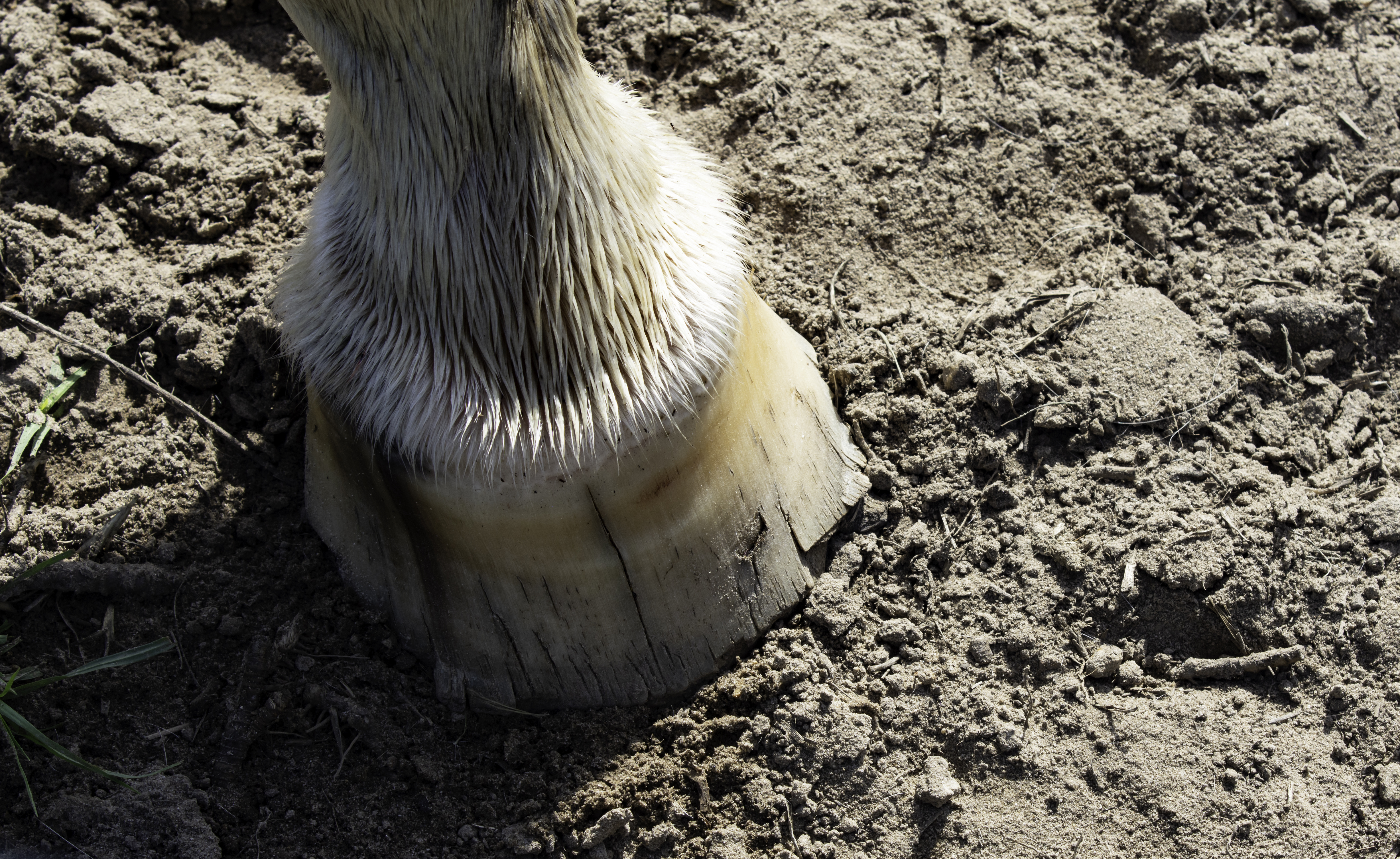Home > Horse Care > Hoof problems are common—and often preventable
Hoof problems are common—and often preventable
- December 18, 2024
- ⎯ Christine Barakat with Mick McCluskey, BVSc
Research from the Netherlands suggests that hoof problems are surprisingly widespread among horses.
For the study, GD Animal Health and Utrecht University researchers in cooperation with Netherlands Association of Certified Farriers monitored a group of 942 randomly selected, healthy horses during the winter and summer of 2015. During routine hoof trimming sessions, each horse’s hooves were examined by certified farriers, who looked for 12 common hoof disorders. The farriers also collected basic data on each horse’s housing and management during those visits.

The information collected showed that hoof problems are widespread: At least one type of (usually mild) hoof disorder was observed in 85 percent of the horses. The most common were thrush, superficial hoof wall cracks, growth rings (ridges that appear on the outside of hooves and are associated with disease, stress, feeding changes and other problems) and sole bruises.
The researchers identified several correlations between management practices and specific hoof conditions. Some were not surprising: For example, horses kept in stalls with wet bedding were nearly three times more likely to have thrush. And horses who went more than eight to 10 weeks between trimmings were nearly five times more likely to develop sole bruises and three times more likely to develop cracks that perforate the hoof wall.
[Click here to learn how to manage your horse for stronger hooves.]
The data also revealed how particular management factors seem to inhibit the development of some conditions while making others more likely. Horses on flax bedding (more common in Europe than the United States) were less likely to develop thrush but twice as likely to develop white line disease.
The researchers conclude that given the “unexpectedly high prevalence” of conditions found and multiple contributory factors, “horse owners may need to specifically adapt their management practices to reduce the risk of a specific disorder.”
This article first appeared in EQUUS Volume #379
Don’t miss out! With the free weekly EQUUS newsletter, you’ll get the latest horse health information delivered right to your in basket! If you’re not already receiving the EQUUS newsletter, click here to sign up. It’s *free*!





